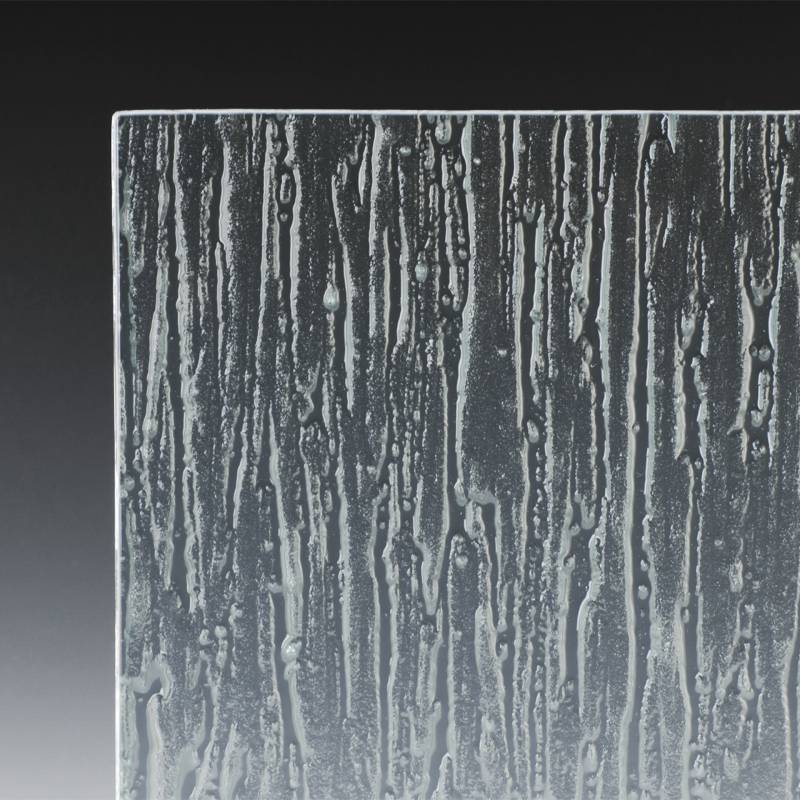Flat glass production is a fascinating journey of transformation where raw materials are meticulously crafted into versatile, transparent sheets used in a multitude of applications. This process epitomizes precision, expertise, and technological innovation, ensuring the highest quality standards are met.

The production of flat glass begins with a careful selection of raw materials. Key ingredients include silica sand, soda ash, limestone, and other minerals, each serving a crucial role. Silica sand acts as the fundamental building block, forming the primary structure of the glass. Soda ash reduces the melting temperature, making the process more energy-efficient, while limestone enhances chemical stability and durability. The precise measurement and blending of these materials are pivotal, requiring expert oversight to avoid impurities that could compromise the glass's clarity and strength.
Once the raw materials are prepared, they are introduced into a furnace, where they are subjected to temperatures soaring up to 1700°C. The expertise of the production team is critical at this juncture, as they must ensure the correct temperature is maintained to achieve a homogenous molten glass mixture. Advanced technology aids in monitoring and adjusting the furnace conditions, ensuring consistency and quality in this complex stage.

Following the melting process, the molten glass undergoes forming. The most renowned method for forming flat glass is the float glass process, innovated by Sir Alastair Pilkington in the 1950s. In this meticulously controlled environment, molten glass is poured onto a bed of molten tin, where it floats and spreads out to form a perfectly flat, uniform sheet. This method capitalizes on the differing densities of glass and tin, creating a natural leveling effect. Process control experts closely monitor the viscosity and temperature, fine-tuning the flow of glass to achieve the desired thickness and surface quality.
flat glass production process
Annealing is the next critical phase, where the glass is gradually cooled in a controlled manner using an annealing lehr – a long, temperature-regulated tunnel. This step is pivotal in alleviating internal stresses within the glass, which, if left unchecked, can lead to weaknesses and potential breakage. The expertise involved ensures that the cooling rate is meticulously balanced, preserving the structural integrity of the glass sheet.
Throughout the production process, quality control is paramount. Experienced technicians employ cutting-edge techniques, such as automated optical inspection systems, to detect imperfections. Such systems use high-resolution cameras and lasers to scan for defects, ensuring each sheet meets rigorous quality standards before being passed for cutting and further processing.
The finish line of the flat glass production process involves cutting and packaging. Equipped with precision equipment, skilled professionals cut the cooled glass into specified dimensions, readying the sheets for distribution. Each cut is executed with precision to minimize waste and optimize the glass's usability, reflecting both craftsmanship and environmental responsibility.
Flat glass production is not merely an industrial process but an art of transformation requiring the confluence of raw material science, advanced technology, and human expertise. The constant innovation within the industry speaks to its authority and commitment to excellence, ensuring that flat glass continues to meet evolving market needs. Trust in this meticulous process is further strengthened by rigorous adherence to environmental regulations and safety standards, reinforcing its reputation for producing glass that is both reliable and durable for diverse applications globally.
 Afrikaans
Afrikaans  Albanian
Albanian  Amharic
Amharic  Arabic
Arabic  Armenian
Armenian  Azerbaijani
Azerbaijani  Basque
Basque  Belarusian
Belarusian  Bengali
Bengali  Bosnian
Bosnian  Bulgarian
Bulgarian  Catalan
Catalan  Cebuano
Cebuano  Corsican
Corsican  Croatian
Croatian  Czech
Czech  Danish
Danish  Dutch
Dutch  English
English  Esperanto
Esperanto  Estonian
Estonian  Finnish
Finnish  French
French  Frisian
Frisian  Galician
Galician  Georgian
Georgian  German
German  Greek
Greek  Gujarati
Gujarati  Haitian Creole
Haitian Creole  hausa
hausa  hawaiian
hawaiian  Hebrew
Hebrew  Hindi
Hindi  Miao
Miao  Hungarian
Hungarian  Icelandic
Icelandic  igbo
igbo  Indonesian
Indonesian  irish
irish  Italian
Italian  Japanese
Japanese  Javanese
Javanese  Kannada
Kannada  kazakh
kazakh  Khmer
Khmer  Rwandese
Rwandese  Korean
Korean  Kurdish
Kurdish  Kyrgyz
Kyrgyz  Lao
Lao  Latin
Latin  Latvian
Latvian  Lithuanian
Lithuanian  Luxembourgish
Luxembourgish  Macedonian
Macedonian  Malgashi
Malgashi  Malay
Malay  Malayalam
Malayalam  Maltese
Maltese  Maori
Maori  Marathi
Marathi  Mongolian
Mongolian  Myanmar
Myanmar  Nepali
Nepali  Norwegian
Norwegian  Norwegian
Norwegian  Occitan
Occitan  Pashto
Pashto  Persian
Persian  Polish
Polish  Portuguese
Portuguese  Punjabi
Punjabi  Romanian
Romanian  Russian
Russian  Samoan
Samoan  Scottish Gaelic
Scottish Gaelic  Serbian
Serbian  Sesotho
Sesotho  Shona
Shona  Sindhi
Sindhi  Sinhala
Sinhala  Slovak
Slovak  Slovenian
Slovenian  Somali
Somali  Spanish
Spanish  Sundanese
Sundanese  Swahili
Swahili  Swedish
Swedish  Tagalog
Tagalog  Tajik
Tajik  Tamil
Tamil  Tatar
Tatar  Telugu
Telugu  Thai
Thai  Turkish
Turkish  Turkmen
Turkmen  Ukrainian
Ukrainian  Urdu
Urdu  Uighur
Uighur  Uzbek
Uzbek  Vietnamese
Vietnamese  Welsh
Welsh  Bantu
Bantu  Yiddish
Yiddish  Yoruba
Yoruba  Zulu
Zulu 


